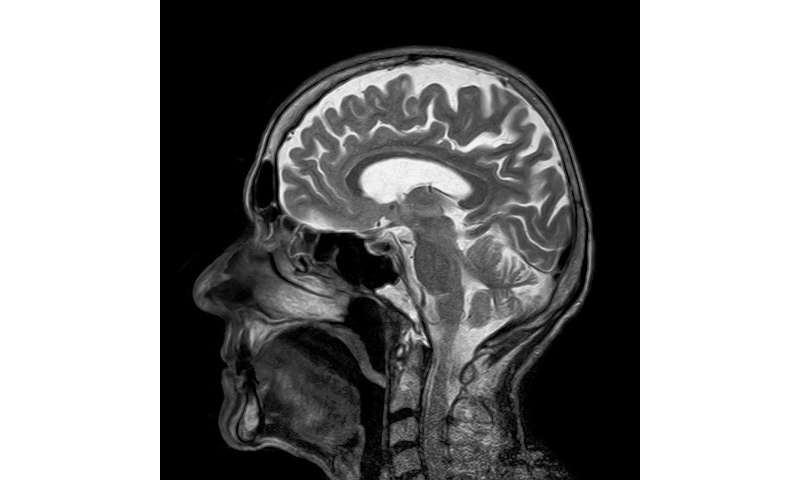
A serial inventor in Connecticut has come up with a portable MRI intended, like his other devices, to make health care more affordable and accessible.
Jonathan Rothberg, a Yale University adjunct professor of genetics who developed and commercialized high-speed DNA sequencing, said a smaller and portable MRI used to scan the brain and other parts of the body will reduce the cost of a conventional MRI. In addition, it can be brought to the patient rather than delivering sick patients to the machine.
“It’s a natural progression and basic desire of the 4 billion people of the world that don’t have access to an MRI,” he said. “It’s a basic desire to bring equity to health care.”
Magnetic resonance imaging scans show the difference between healthy and diseased tissue, and can provide information about the brain, spine, joints and internal organs, leading to early detection and treatment of disease. It’s particularly useful for finding a problem in the brain, a complicated organ encased behind the skull, a dense barrier made of bone.
An ultrasound, for example, can provide important and useful information about the ankle, said Kevin Sheth, a professor of neurology and neurosurgery at the Yale School of Medicine, which is using the portable MRI in clinical settings.
“With the brain, that’s not the case,” he said. “The thickness and composition of the skull is a huge barrier to those technologies.”
The MRI allows physicians and researchers to look at the brain in ways that can detect the impacts of a stroke, head trauma, bleeding and multiple sclerosis, Sheth said.
“It can look past the skull and tell us something about the brain tissue,” he said.
Rothberg’s work is part of a pattern in which he develops and supports life science and medical device companies such as Hyperfine Research, which developed the portable MRI, to make medicine more widely available. He said the portable MRI was developed at a cost of more than $70 million. “We reinvented it from scratch.”
MRIs are large machines kept in a separate part of a hospital and using a strong magnetic field and radio waves to create detailed images of the body’s organs and tissues. The devices are operated by clinicians and require patients, sometimes hobbled by mobility problems, to be delivered for treatment.
“Transporting sick patients is not a trivial thing,” Sheth said.
Instead, a portable MRI is brought to patients in their hospital rooms, allowing friends and family to be present. “It flips the whole concept on its head,” Sheth said.
In addition, the cost of a portable MRI, at $50,000, is a fraction of the $1 million or more a machine now costs, making it possible for more hospitals, medical centers and other sites to operate the machines, delivering care to a greater number of patients.
The U.S. Food and Drug Administration is reviewing the portable MRI, with clearance expected in 2020, Rothberg said. With FDA approval, Hyperfine will offer it for sale to hospitals, medical practitioners, rehabilitation centers and other medical sites, even sporting events where head injuries can be detected, Rothberg said.
“The history of the MRI is a big, expensive machine that has to be in a specialized, shielded facility for a couple of million dollars,” he said. “These machines were developed in the late 1970s. Since then, computer power has increased 10 million fold.”
Faced with the machine that weighs a few tons and uses a tremendous amount of power, “we decided to rethink it,” he said.
More data and greater accessibility have led to “serious ethical concerns,” said Francis Shen, a professor at the University of Minnesota Law School. He and Susan Wolf, a professor of law, medicine and public policy at the University of Minnesota, are researching issues tied to advances in brain scanning technology.
A key issue is privacy. Data have not only multiplied in quantity, but also pass through more handlers in cloud-based storage, raising questions about how data are shared and with whom, Shen said.
The Brain Initiative, a project of several institutes and centers of the National Institutes of Health, includes research in neuroethics. Social and ethical questions are related to studies of the brain, which “gives rise to consciousness, our innermost thoughts and our most basic human needs,” according to the NIH.
Shen said best practices governing scanning technology should be developed by collaboration involving regulatory agencies, the industry, ethicists and others.
For Rothberg, the new MRI is another step in his drive to make ultrasound technology more broadly available. He’s developed an affordable hand-held ultrasound device and created a microchip technology that altered the slow process of reading DNA.
Sheth is enthusiastic about the new MRI, calling it a revolutionary change in how, where and when researchers and medical practitioners study the brain.
Source: Read Full Article
